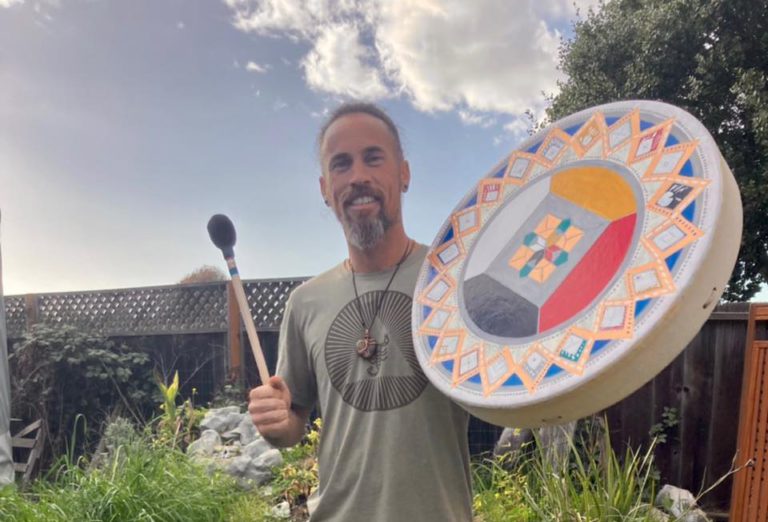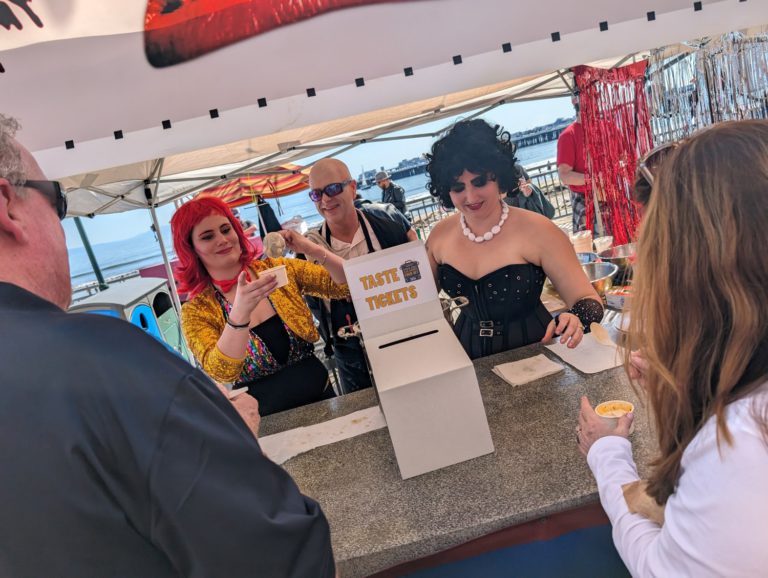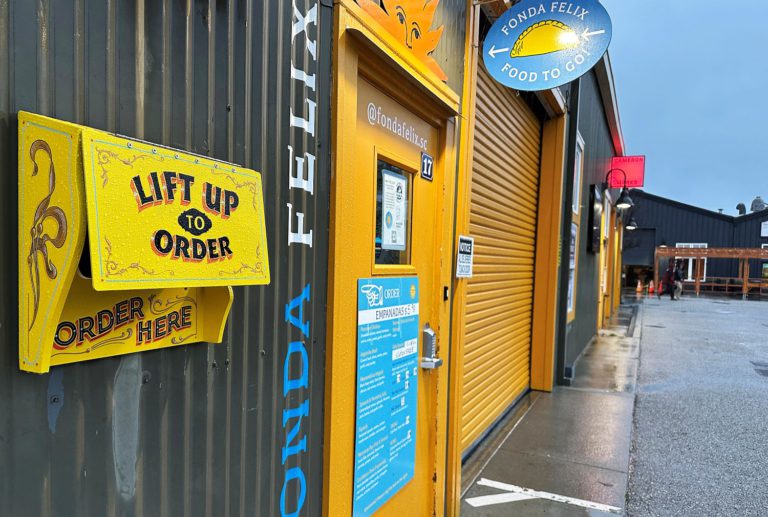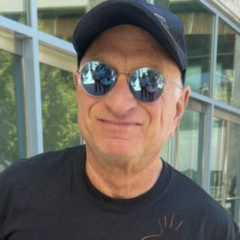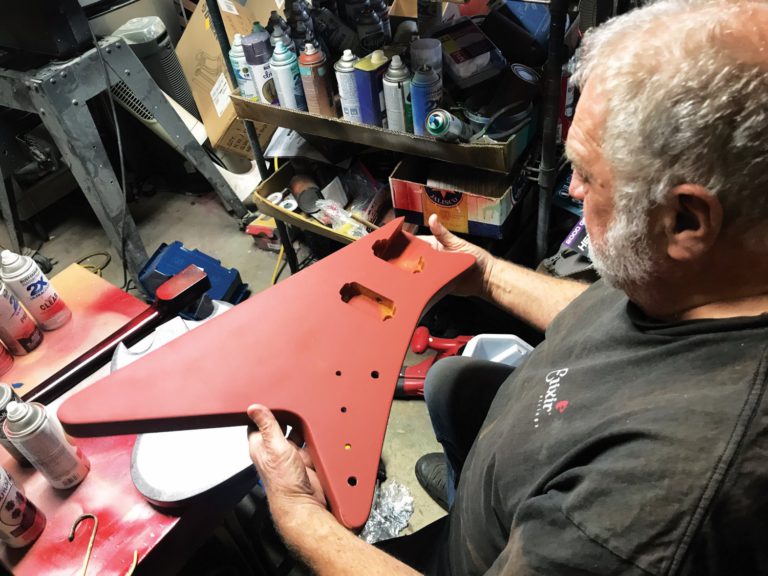THURSDAY
ROCK

BLU EGYPTIAN
Here’s a fun one: electronica + bluegrass + funk = what? If you ask a member of the self-described Blu Cru, they will answer Blu Egyptian. Over the past three years, this quartet from Chico has been hustling hard, playing hundreds of shows to establish its reputation as one of the most charismatic upcoming groups on the West Coast jam band scene. They’ve supported national touring acts like the String Cheese Incident and the Motherhips and, as of January 2024, have a zany, lovely new album called Chantress of Amun. There’s no better way to celebrate the mind-blowing nature of leap day. ADDIE MAHMASSANI
INFO: 8pm, Felton Music Hall, 6275 Hwy 9, Felton. $17/adv, $19/door. 704-7113.
FRIDAY
ELECTRONIC
ERIC FRYE & MITCHELL KEANEY
Local performance space Indexical has a night of heady art in store for those who love to bask in sonic vibrations. First on the bill is Eric Frye, a Minneapolis-based composer and artist who creates experiential sound installations that explore the human mind. He has participated in residencies and performed worldwide, recently collaborating with experimental musician Lucy Liyou for the album Grace. Joining Frye is Mitchell Keaney, a Berlin-based musician who blends analog field recordings with electronic drones with fascinating results. There is no right way to experience these works; the best plan is to listen with an open mind. AM
INFO: 8:30pm, Indexical, 1050 River St. #119, Santa Cruz. $16. 627-9491.
FILM
BANFF MOUNTAIN FILM FESTIVAL
Currently touring internationally, the Banff Mountain Film Festival will be in Santa Cruz for three nights at the Rio Theatre, Friday through Sunday. This year’s festival includes 37 short films on a wide range of outdoor adventure topics, from exploring remote locales to high-intensity action sports. Different films will be screened each night. The event is a benefit supporting Adventure Rec student programs at UCSC. Last year, more than 1,300 attendees enjoyed the festival, raising more than $20,000 to defray students’ participation costs. DAN EMERSON
INFO: 7pm, Rio Theatre, 1205 Soquel Ave., Santa Cruz. $23. 423-8209.
SATURDAY
FOLK
SINGER-SONGWRITERS IN-THE-ROUND
This show will present Elisabeth Carlisle, Shane Alexander and Cindy Alexander, three friends who met while playing clubs in the LA area. Carlisle enjoyed her first widespread success in the late ’90s with her debut album, No Worries. Later, Carlisle moved to Sweden, where she wrote and recorded several well-received albums. LA-based Shane Alexander has extensively toured the US, Europe and Canada as a headliner and supporting act. Cindy Alexander has enjoyed a prolific career, writing and recording a dozen albums since her debut in 1999. DE
INFO: 7:30pm, Community Theater Guild, 251-B Kings Village Rd., Scotts Valley. $25. 252-3501.
EDUCATION
UCSC GRAD SLAM
Pursuing higher education can be an isolating experience. Friends and family won’t always have the background necessary to truly understand what goes on at the graduate student’s desk. Enter the UCSC Grad Slam, where students from every discipline of the UCSC graduate programs have no more than three minutes to describe their studies and/or contributions to their fields. There will be representatives from fields across the disciplines, all of whom will share what their big brains have been up to in the hopes of winning some cash . . . and sharing their worlds with the public. JESSICA IRISH
INFO: 7pm, Kuumbwa Jazz, 320 Cedar St., Santa Cruz. Free. 427-2227.
DEATHCORE
LOST TO THE VOID
Is Deathcore having a bit of a resurgence, or has it never gone away? For Lost to the Void members, it’s always been alive and well. This unrelenting band from San Jose just dropped their sophomore album, Embrace in Disgust, last August, their first since 2019’s Necrotic Ideology. The result is 14 songs culminating in 64 minutes of grisly screaming, heavy breakdowns and sludgy riffs topped with plenty of double bass mixed between an experimental noise track or two. Unbelievers and the faithful alike will see how lost to the void they are this Saturday at the Downtown Santa Cruz Vets Hall as PinUp Presents brings the crew back with Sin Miedo, Usurper, Mercy Mine and Cruel Idols packing the bill. MAT WEIR
INFO: 6pm, Veterans Memorial Building, 846 Front St., Santa Cruz. $10/adv, $15/door. 454-0478.
SUNDAY
SOUL
KENDRA MORRIS
While Kendra Morris might not be a household name (and in this reporter’s opinion, that’s a shame), many likely have heard her voice without knowing it, especially if they’re hip-hop heads. Along with releasing two albums on Wax Poetics, she’s collaborated with heavy hitters like 9th Wonder, Czarface, MF Doom, DJ Premier, Ghostface Killah and more. Her solo music paints personal—and maybe not-so-personal—stories of life and the road by blending soul, R&B and some elements of hip-hop, carried by a smoky-rich voice with a dollop of honey, making it smooth, sweet and seductive. Valentine’s Day might be over, but that won’t stop the romance emanating from the stage when Kendra Morris hits the mic. MW
INFO: 8pm, Moe’s Alley, 1535 Commercial Way, Santa Cruz. $15/adv,$20/door. 479-1854.
MONDAY
AUTHOR EVENT
GUY KAWASAKI
Bookshop Santa Cruz favorite Guy Kawasaki returns with his new title, Think Remarkable: 9 Paths to Transform Your Life and Make a Difference. Kawasaki’s bio will make the average person wonder how one person can be so productive. He’s written 16 books, runs a podcast, has worked at the top of several major tech companies and has degrees or appointments with impressive schools like Harvard, Berkeley and Stanford. If anyone knows what remarkable looks like, it’s this Guy. He finds it in others, too, including icons like Jane Goodall and Stacey Abrams, who lend advice in his latest book. JI
INFO: 7pm, Bookshop Santa Cruz, 1520 Pacific Ave., Santa Cruz. Free. 423-0900.
WEDNESDAY
ALT
MIA X ALLY
Mia Asano and Piper.Ally joined forces to create an exciting, fashionable, jaw-dropping experience. With Mia on the electric violin and Piper.Ally on the bagpipes, they put on an electrifying show that gives a modern twist to traditional instruments as they cover songs like “The Devil Went Down to Georgia,” “Free Bird,” and “Through the Fire and Flames.” They mix original songs and these reimagined covers to create a mesmerizing performance. People in the audience will surely find themselves headbanging and dancing as they shred on stage. Their passion for the music and instruments is embedded into every performance, making every show a high-energy and fun experience. ISABELLA MARIE SANGALINE
INFO: 8pm, Catalyst, 1101 Pacific Ave., Santa Cruz. $25/adv, $30/door. 713-5492.



